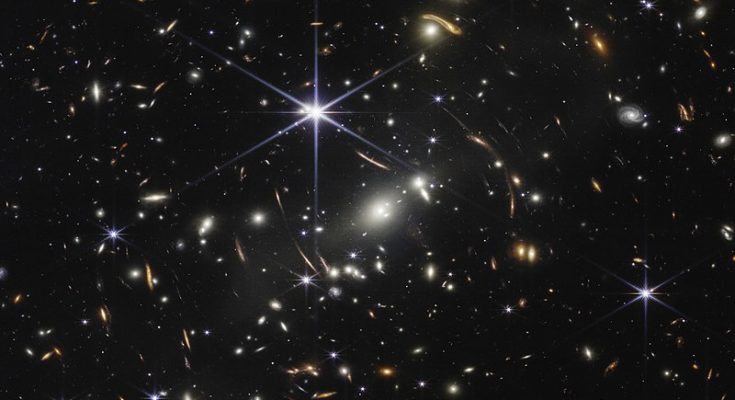By Paola Velasco
On July 11, U.S. President Joe Biden released the first full-color image from NASA’s James Webb Space Telescope (JWST) during a public event at the White House in Washington, D.C. This first image shows the powerful capabilities of the Webb mission, a partnership between NASA, the European Space Agency (ESA), and the Canadian Space Agency (CSA).
«These images are going to remind the world that America can do great things, and remind the American people, especially our children, that nothing is beyond our ability,» President Biden said in his remarks at the event. «We can see possibilities that no one has seen before. We can go places that no one has gone before,» he stressed.
Webb’s first full-color image shows thousands of galaxies, including the faintest objects seen in infrared light to date.
«The first Webb Deep Field is not only the first full-color image from the James Webb Space Telescope; it is the deepest, sharpest infrared image of the distant universe taken to date. This image covers a patch of sky about the size of a grain of sand held at arm’s length. It’s just a small slice of the vast universe,» said NASA Administrator Bill Nelson. “This mission has been made possible thanks to human ingenuity: the incredible Webb team at NASA and our international partners at the European Space Agency and the Canadian Space Agency. Webb is just the beginning of what we can achieve in the future when we work together for the benefit of humanity,» Nelson explained.
The Webb Telescope was launched into space on December 25, 2021. It is a space observatory developed through the collaboration of 20 countries, jointly built and operated by NASA, the ESA and the CSA, to replace the Hubble and Spitzer telescopes. The Webb Telescope will offer unprecedented resolution and sensitivity, enabling a wide range of research in the fields of astronomy and cosmology. One of its main goals is to observe some of the most distant events and objects in the universe, such as the formation of the first galaxies. These types of targets are beyond the reach of current ground and space instruments. Another goal is to study star and planet formation and direct imaging of exoplanets and novae.
References: www.nasa.gov




